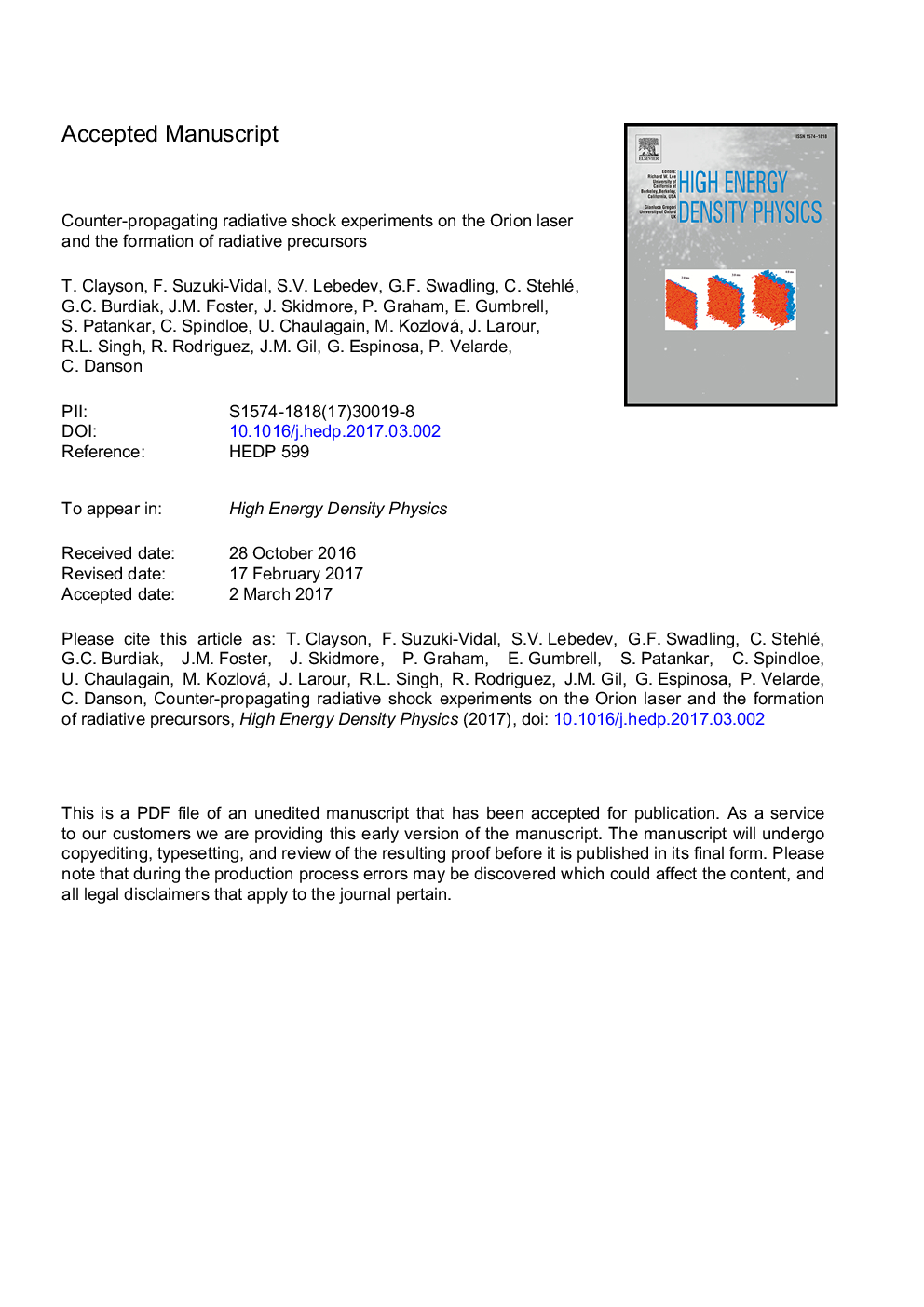| Article ID | Journal | Published Year | Pages | File Type |
|---|---|---|---|---|
| 5486906 | High Energy Density Physics | 2017 | 16 Pages |
Abstract
We present results from new experiments to study the dynamics of radiative shocks, reverse shocks and radiative precursors. Laser ablation of a solid piston by the Orion high-power laser at AWE Aldermaston UK was used to drive radiative shocks into a gas cell initially pressurised between 0.1 and 1.0 bar with different noble gases. Shocks propagated at 80 ± 10  km/s and experienced strong radiative cooling resulting in post-shock compressions of Ã25 ± 2. A combination of X-ray backlighting, optical self-emission streak imaging and interferometry (multi-frame and streak imaging) were used to simultaneously study both the shock front and the radiative precursor. These experiments present a new configuration to produce counter-propagating radiative shocks, allowing for the study of reverse shocks and providing a unique platform for numerical validation. In addition, the radiative shocks were able to expand freely into a large gas volume without being confined by the walls of the gas cell. This allows for 3-D effects of the shocks to be studied which, in principle, could lead to a more direct comparison to astrophysical phenomena. By maintaining a constant mass density between different gas fills the shocks evolved with similar hydrodynamics but the radiative precursor was found to extend significantly further in higher atomic number gases (â¼4 times further in xenon than neon). Finally, 1-D and 2-D radiative-hydrodynamic simulations are presented showing good agreement with the experimental data.
Related Topics
Physical Sciences and Engineering
Physics and Astronomy
Astronomy and Astrophysics
Authors
T. Clayson, F. Suzuki-Vidal, S.V. Lebedev, G.F. Swadling, C. Stehlé, G.C. Burdiak, J.M. Foster, J. Skidmore, P. Graham, E. Gumbrell, S. Patankar, C. Spindloe, U. Chaulagain, M. Kozlová, J. Larour, R.L. Singh, R. Rodriguez, J.M. Gil, C. Danson,
